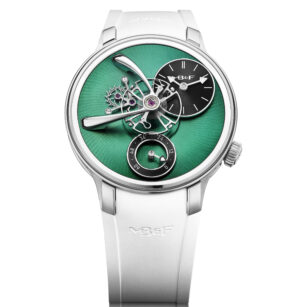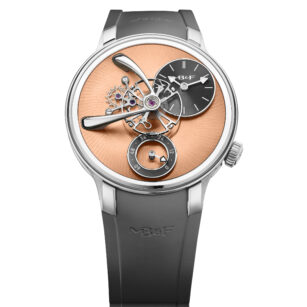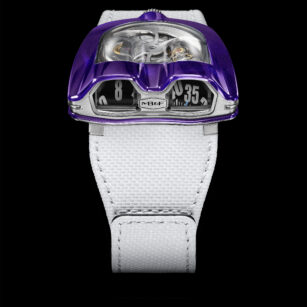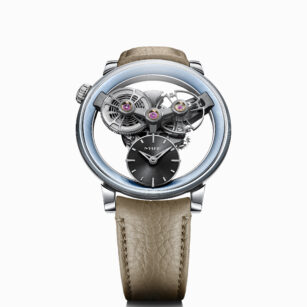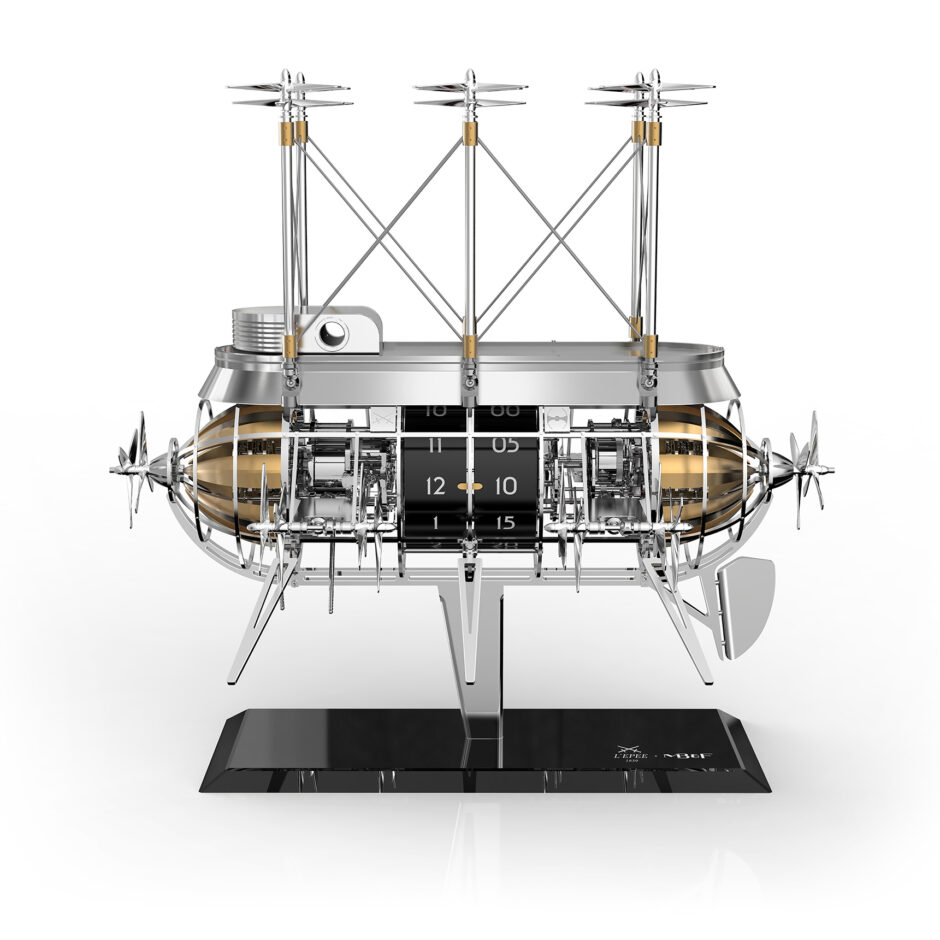



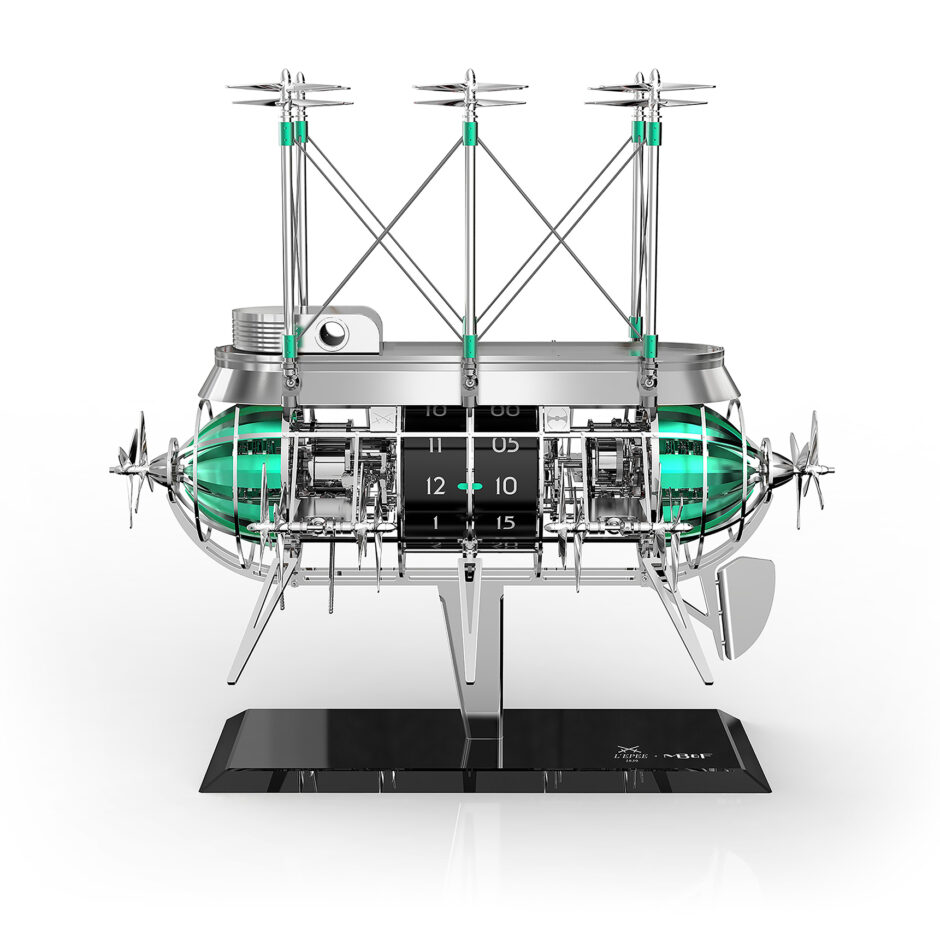

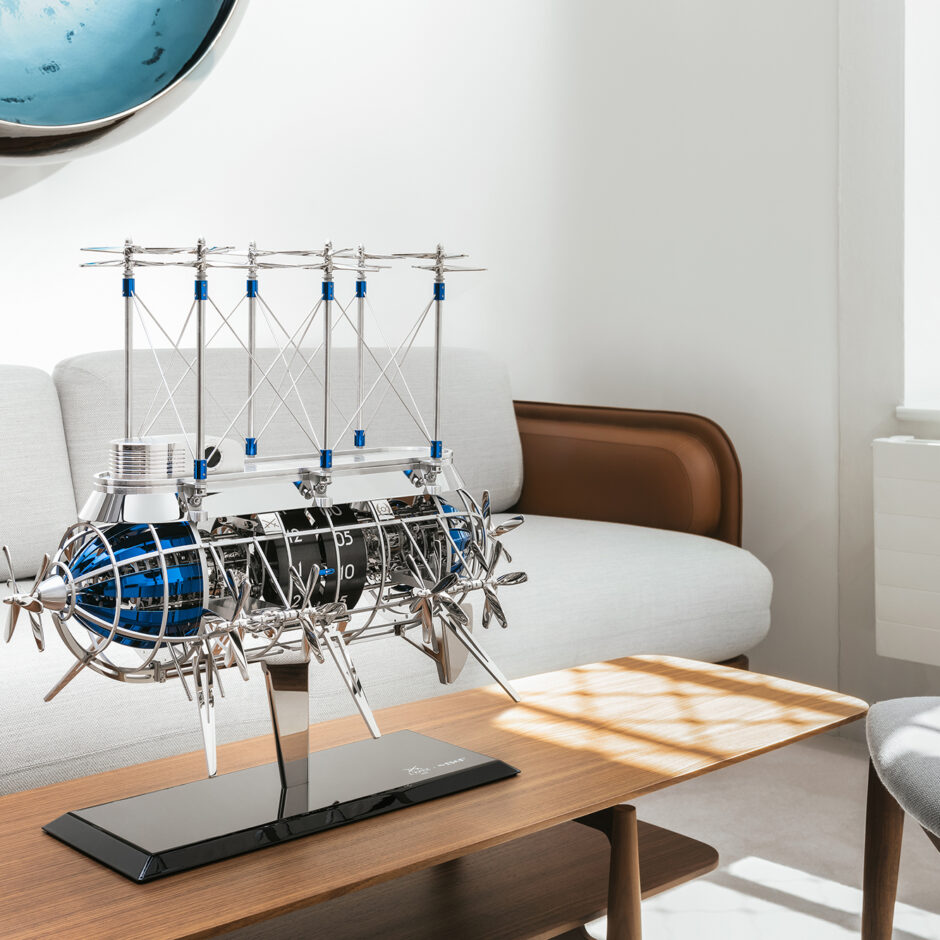
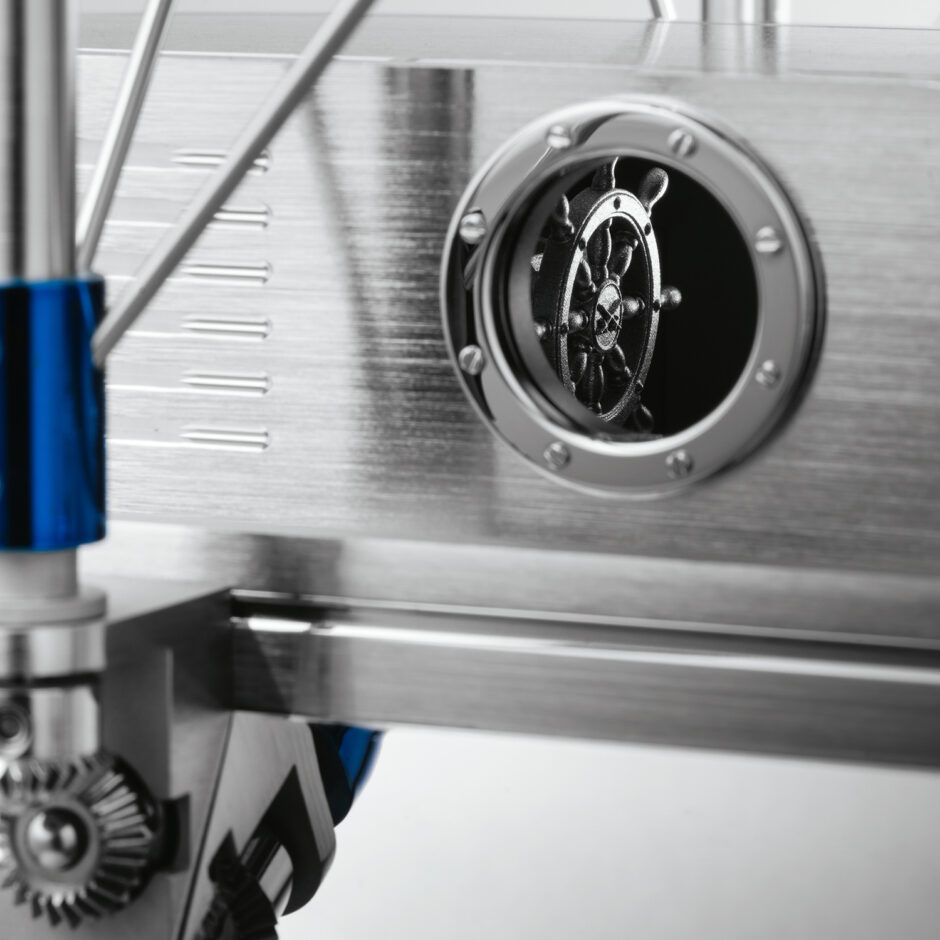
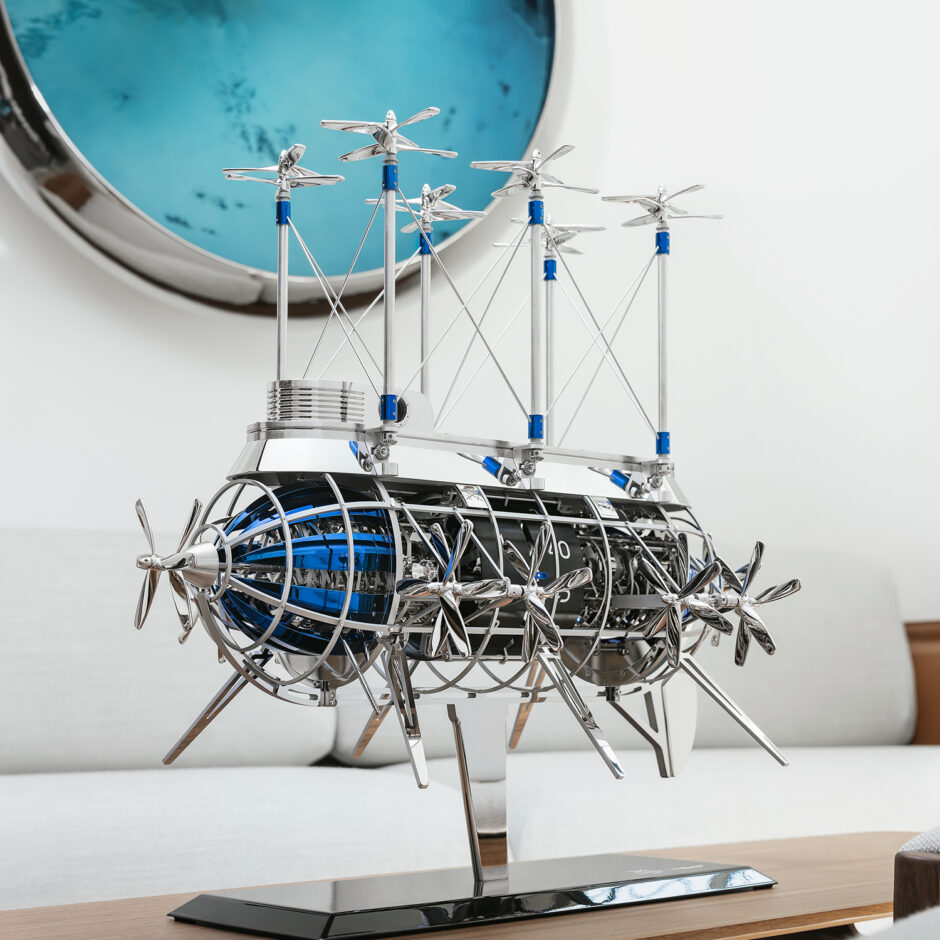
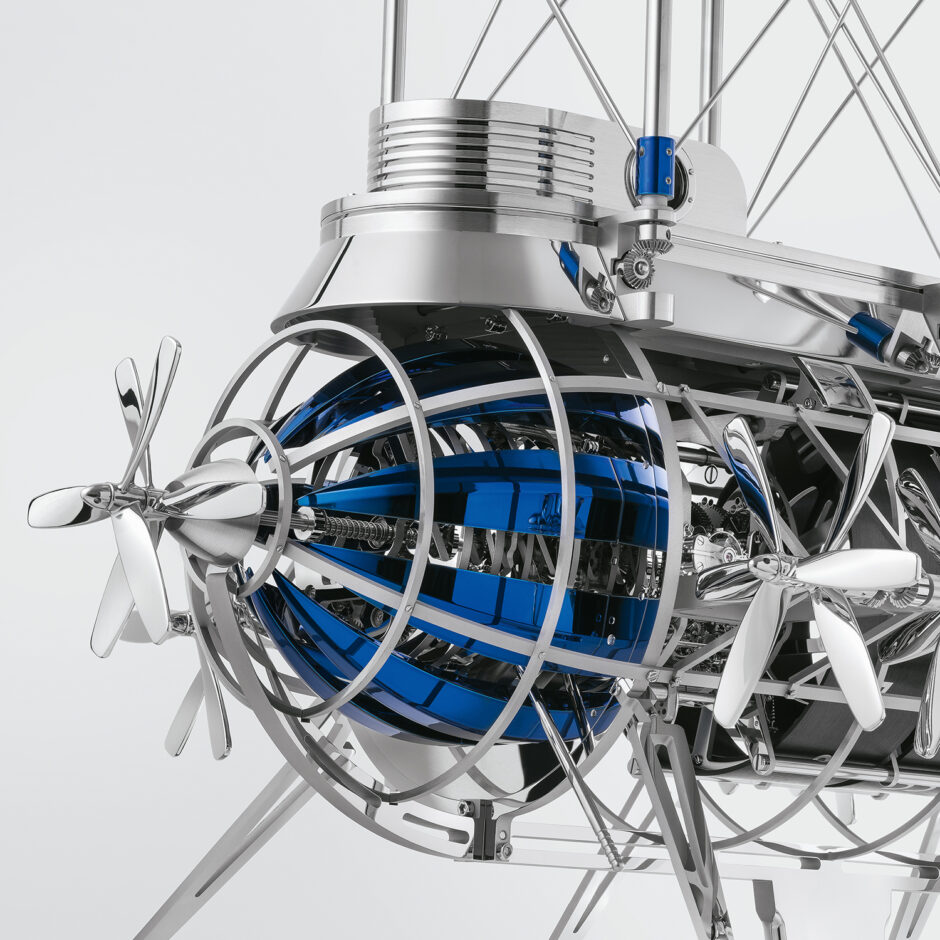
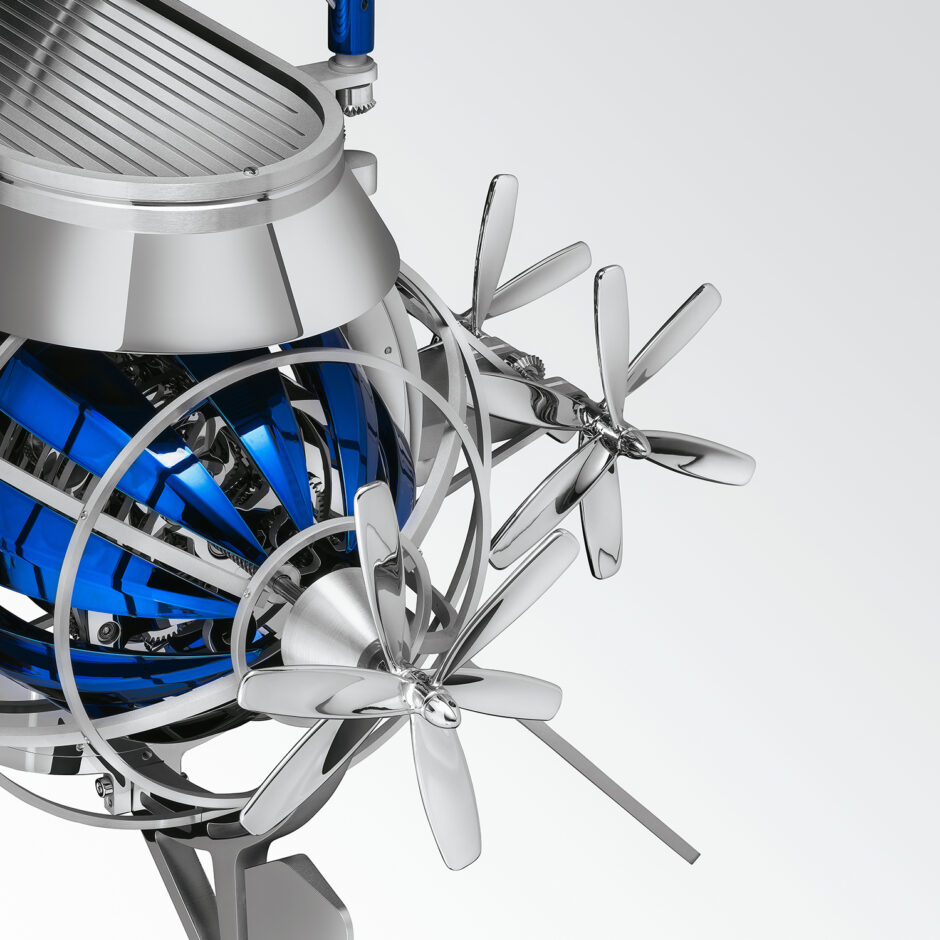
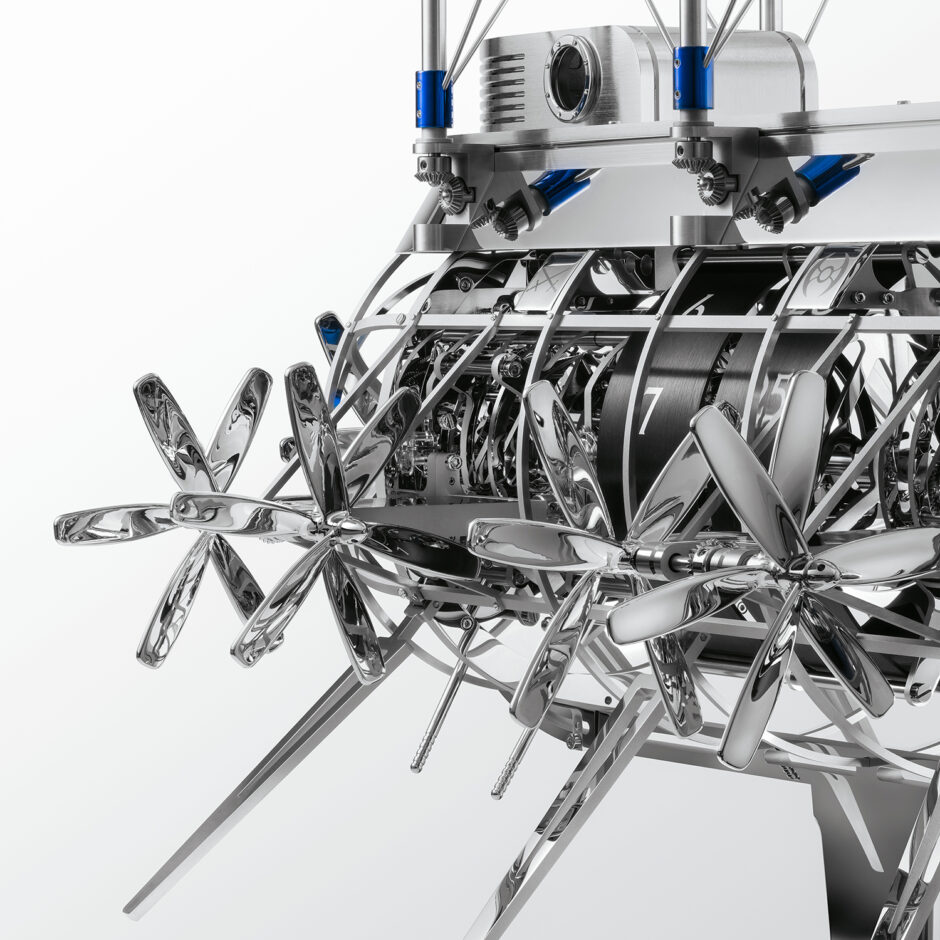
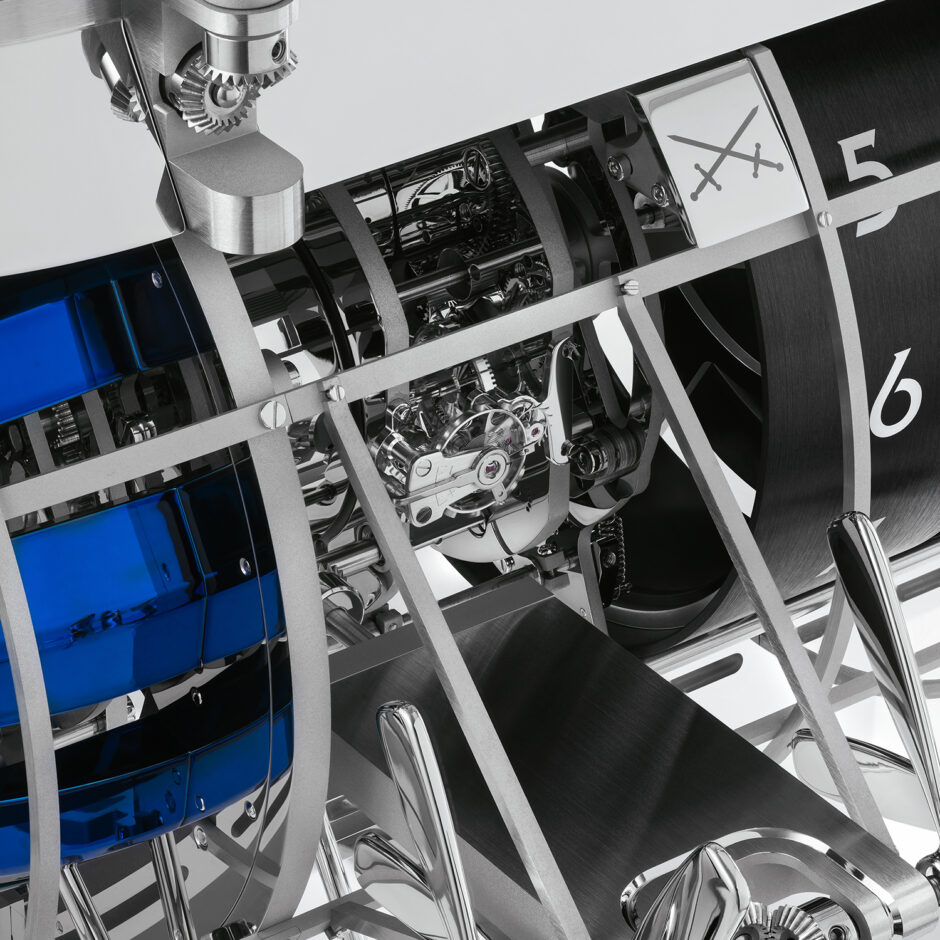
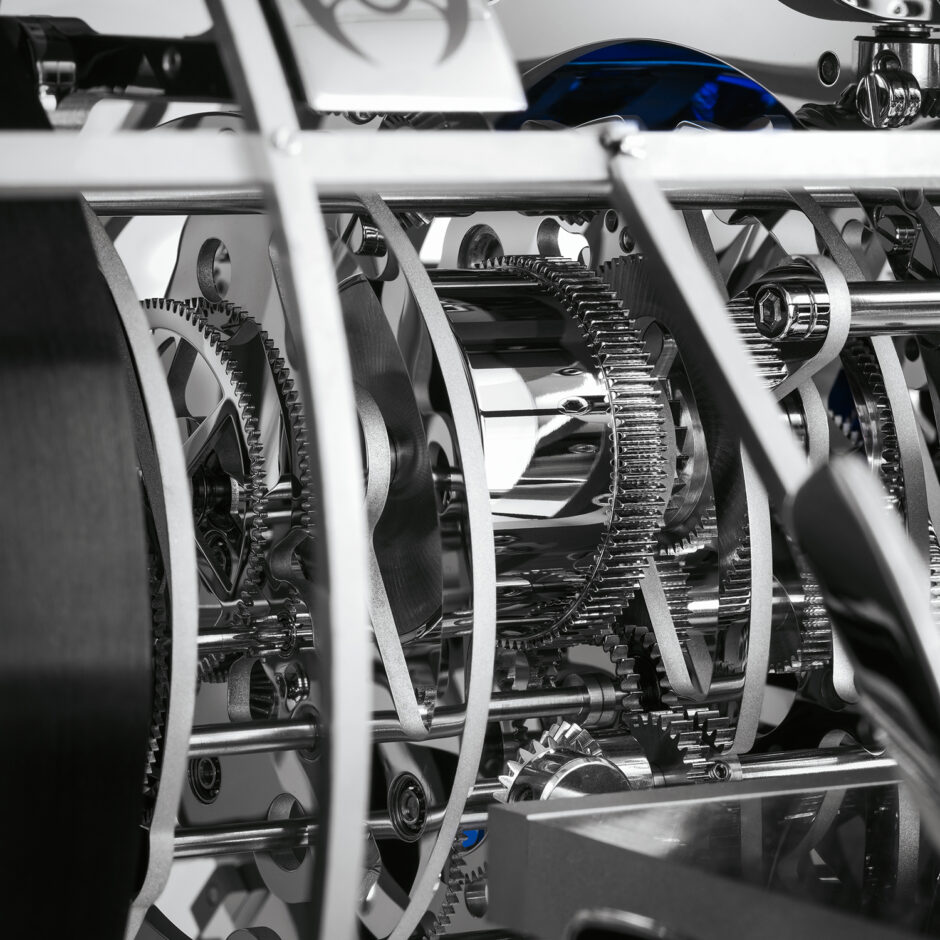
Albatross: the hour takes flight, between Jules Verne and dreams of adventure.

Ready for take-off: an ambitious collaboration takes off
After a decade of partnership and 15 remarkable clocks, L’Épée 1839 and MB&F unveil their most audacious creation to date: the Albatross. This spectacular clock, made up of 1,520 elements, features a striking mechanism that strikes the hours and half-hours, and an impressive automaton with 16 pairs of propellers in motion every hour.
Designed by Eric Meyer, the Albatross is inspired by Jules Verne’s airship in Robur the Conqueror and reflects the author’s fascination with flying machines, which he illustrated in his works. The references to Verne, which have already influenced several MB&F creations, reinforce the unique character of this clock, a fusion of high precision and watchmaking craftsmanship.
With its imposing dimensions – 60 cm long, 60 cm high and 35 cm wide, weighing 17 kg – the Albatross is much more than just a clock. Every hour, it comes to life, and its 32 propellers spin for seven seconds, giving the impression that the aircraft is about to take off.
The Albatross is powered by two separate movements: one for the clock and bell, the other for the automaton. The latter is wound via the rear propellers, while the front propellers are used to wind the clock and the bell. Its autonomy is just as impressive, with around eight days of reserve power for the clock and one day for the PLC. Thanks to an innovative control system, users can choose to deactivate or activate the alarm and/or the propellers as they wish.
The propellers, which work in pairs, rotate in opposite directions, reinforcing the illusion of take-off. Despite their controlled speed, they produce no wind, which required extensive testing to avoid unexpected turbulence during development. Arnaud Nicolas, CEO of L’Épée, recalls these tests with humour, evoking an atmosphere akin to that of a helicopter ready to take off in the workshop.
The attention to detail is also reflected in the miniature cockpit, with its instrument panel and rudder hidden behind a porthole, a nod to the curious, young and old alike. This detail, initially unplanned, was added when the idea of a transparent cabin emerged.
Made from brass, steel and aluminium, the Albatross is available in five colours: blue, red, green, champagne and black, with each version limited to eight pieces. The colours are obtained using a special translucent lacquering technique developed by L’Épée, which lends unrivalled depth to the finishes.
A combination of precision watchmaking and automaton, the Albatross redefines standards and echoes the spirit of adventure that was Jules Verne’s hallmark. A rare and spectacular object, destined to adorn interiors the world over and spark the imagination of those who admire it.
The Albatross, in five limited editions of 8 pieces each, comes in blue, red, green, champagne and black.
Functions
Hours and minutes on rotating discs.
Chime for the hours, with one strike for each hour, and the half-hours, with a single strike.
Automaton made up of 16 pairs of propellers that come into action every hour.
The chime and automaton (propeller) functions can be activated or deactivated.
Two buttons activate the alarm and/or the propellers on demand.
Movements
Two movements and two winding systems designed and manufactured in-house by L’Epée 1839: one for the time and striking mechanism, the other for the automatic mechanism (propellers).
Movement finish: a blend of satin-finishing and polishing.
Time and striking movement
In-line 8-day movement
Balance frequency: 2.5 Hz / 18,000 vph
Rublis: 11
Incabloc shock protection system
Manual winding via the propellers on the front of the flying machine: clockwise for the striking, anti-clockwise for the time
2 separate barrels for the time and striking functions
Automatic movement
Manual winding via the propellers at the back
Power reserve: when activated, the automaton can run for a day
1 barrel for the self-winding movement
Components/parts
1520 components in total
Dimensions :
600 mm long x 350 mm wide x 600 mm high
Weight: 17 kg
Body/structure
Clock made of brass, steel and aluminium
Colours: translucent cold lacquer, in blue, red, green, champagne or black
L’EPEE 1839 – SWITZERLAND’S LEADING CLOCK MANUFACTURER
L’Epée 1839 has been a leading watch manufacturer for 185 years. Today, it is the only company in Switzerland specialising in the production of top-of-the-range clocks. Founded in 1839 by Auguste L’Epée in Besançon, France, it initially focused on the manufacture of music boxes and watch components. From that time onwards, the brand was synonymous with entirely hand-crafted timepieces.
From 1850 onwards, the Manufacture was a leader in the production of escapements and began to develop specific regulators for alarm clocks, table clocks and musical watches. It acquired a great reputation and registered numerous patents for special escapements, in particular for its anti-rattle, self-starting and constant-force systems. L’Épée 1839 became the main supplier to several famous watchmakers and won numerous gold medals at world exhibitions.
During the 20th century, L’Epée 1839 became best known for its remarkable travel clocks. Many people associated the brand with influential people and men of power. Members of the French government were happy to present their distinguished guests with a clock. In 1976, for the launch of the commercial flights of the supersonic Concorde aircraft, L’Epée equipped the cabins with wall clocks to tell the time to passengers. In 1994, it demonstrated its taste for challenges by building the world’s largest pendulum clock, the ‘Régulateur Géant’, which has been entered in the Guinness Book of Records.
Today, L’Epée 1839 is based in the Swiss Jura (Delémont) and managed by Arnaud Nicolas (CEO). The Manufacture boasts incredible expertise in the creation of exceptional watchmaking sculptures, made entirely in-house.
Technical prowess, the combination of form and function, long power reserves and remarkable finishing have become the brand’s specialities.
In 2023, L’Epée 1839 won the Mechanical Clock Prize at the Grand Prix d’Horlogerie de Genève (GPHG), thanks to the creative and technical challenge taken up by the Time Fast II Chrome.
The L’Epée 1839 collections are based on three themes:
Creative Art: at the top, artistic pieces, sometimes developed as co-creations in partnership with external designers. These clocks surprise, inspire and even shock even the most seasoned collectors. They are for those who consciously or unconsciously seek out exceptional objects.
Contemporary Timepieces: technical creations with a contemporary design (Le Duel, the Duet, etc.) and avant-garde minimalist models (La Tour) that incorporate complications such as retrograde seconds, power reserve indicators, moon phases, tourbillons, chimes or perpetual calendars.
Carriage Clocks: these historic travel clocks or officers’ clocks, inspired by the brand’s heritage, also incorporate their share of complications – striking, minute repeater, calendar, moon phase, tourbillon, etc.

